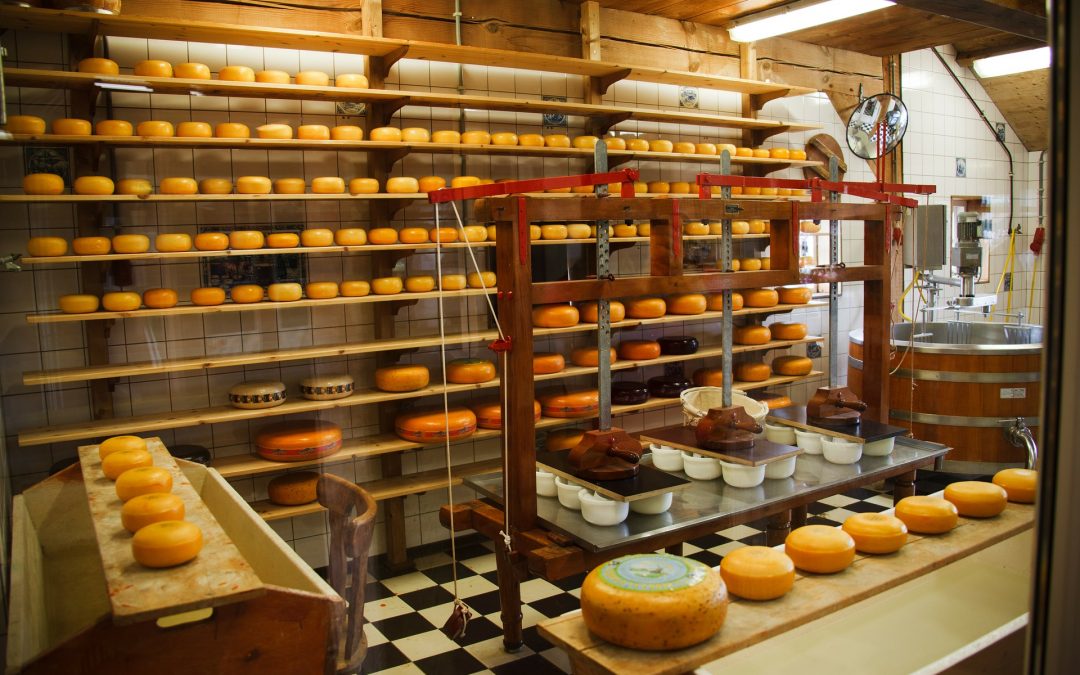Not all cheeses are the same. Different varieties of cheeses are a result of their aging process. Ripening cheese is an important factor that affects the taste and flavour of the particular cheese you are making.
Aging or maturing cheese under controlled conditions allow the microbes and enzymes to break down milk fat and proteins, transforming the texture and aroma of the cheese.
The longer the aging time, the firmer the cheese while the shorter aging time makes a softer cheese.
Hard cheeses can be stored and aged for a few months up to 2 years while soft cheeses are usually aged between 2 weeks to 2 months.
The first step is to prepare a cave or fridge. Take note that the cheese should not be stored in cold temperatures. Storing it near the freezer compartment will freeze the cheese and damage it.
Ripening cheese should be kept around 42° and 52°F. Store the cheese in a cool, dry place. You can use an old garage or an empty room in your home as a perfect place to age cheese.
Once you have a dedicated space to store cheese, it’s time to cover the cheese. Do not cover the cheese too tight. Cheese needs room to breathe. The living organisms that help cheese mature and add flavour will eventually die if there is no proper oxygen supply. As a result, the cheese can taste stale or become unsafe to eat.
Humidity is also a vital factor in aging cheese. If the environment is too dry, the cheese will dry out while too humid can attract unwanted molds. Always wrap your cheese in wax paper or baking parchment. You can store cheese in enclosed containers to provide the desired humidity level. If the cheese needs more moisture, you can lay down a dampened cloth in the container.
You should also not forget ventilation. Storing the cheese in a crowded fridge or cave will affect the flavour and texture of the cheese. Make sure that the environment has proper air circulation so that there will be a good exchange of gases (oxygen and carbon dioxide).
Lastly, constant observation and maintenance of the cheese aging environment are required to get the best possible results. Regularly check for undesirable molds and keep an eye on the humidity, temperature, and ventilation. Turn and flip the cheeses and wipe them if needed to avoid the potential spread of unwanted guests.
Understanding Cheese Ripeness
How to tell if the cheese is ripe? The best way to find out the ripeness of cheese is by touching it. typically, the cheese should not be too soft and the rind is fully intact. The bloomy rind or washed rinded cheese should not feel softer than a ripe banana. It must not be super soft but rather have some firmness in it. If your cheese is wrapped by plastic, the creamline should not make its way to the center.
With the exemption of fresh cheese, the curd is ripened at controlled temperatures and age until it reached its characterized texture and taste. During the ripening process, protein breakdown and degradation of lactose are carried out by ripening agents.
Here are the principal ripening agents:
Milk Coagulant
Coagulation is the process of transforming liquid milk into solid curd. Not all milk coagulant is same. They have their own proteolytic profile. For example, the purified extracts lack character but produce more consistent flavours. For aged cheese, an enzyme called rennet is usually applied as it actively acts on milk proteins and breaks down caseins.
2 Types of Coagulation Process:
1. Acid or Lactic Coagulation
The acid can be produced by starter cultures or added directly to coagulate milk. Quark, cottage cheese, and chèvre are a few examples of cheese that use acid coagulation.
2. Enzymatic Coagulation
In this process, an enzyme, “chymosin” which is present in the rennet breaks down casein and causes the micelles to aggregate and form into a gel. The casein precipitates due to the combined action of acidity, enzyme, temperature, and calcium.
Lactic Cultures
Lactic culture is often referred to as LAB or lactic acid bacteria used in cheesemaking to develop acidity and promote ripening. It also helps control moisture content by promoting syneresis, a contraction process of the protein in the curd.
Cheese varieties are a result of different pH levels. Examples of low pH cheese are gouda, cheddar, cream cheese, feta, and cottage cheese while high pH cheese includes blue cheese, brie, ricotta, and bread cheese.

